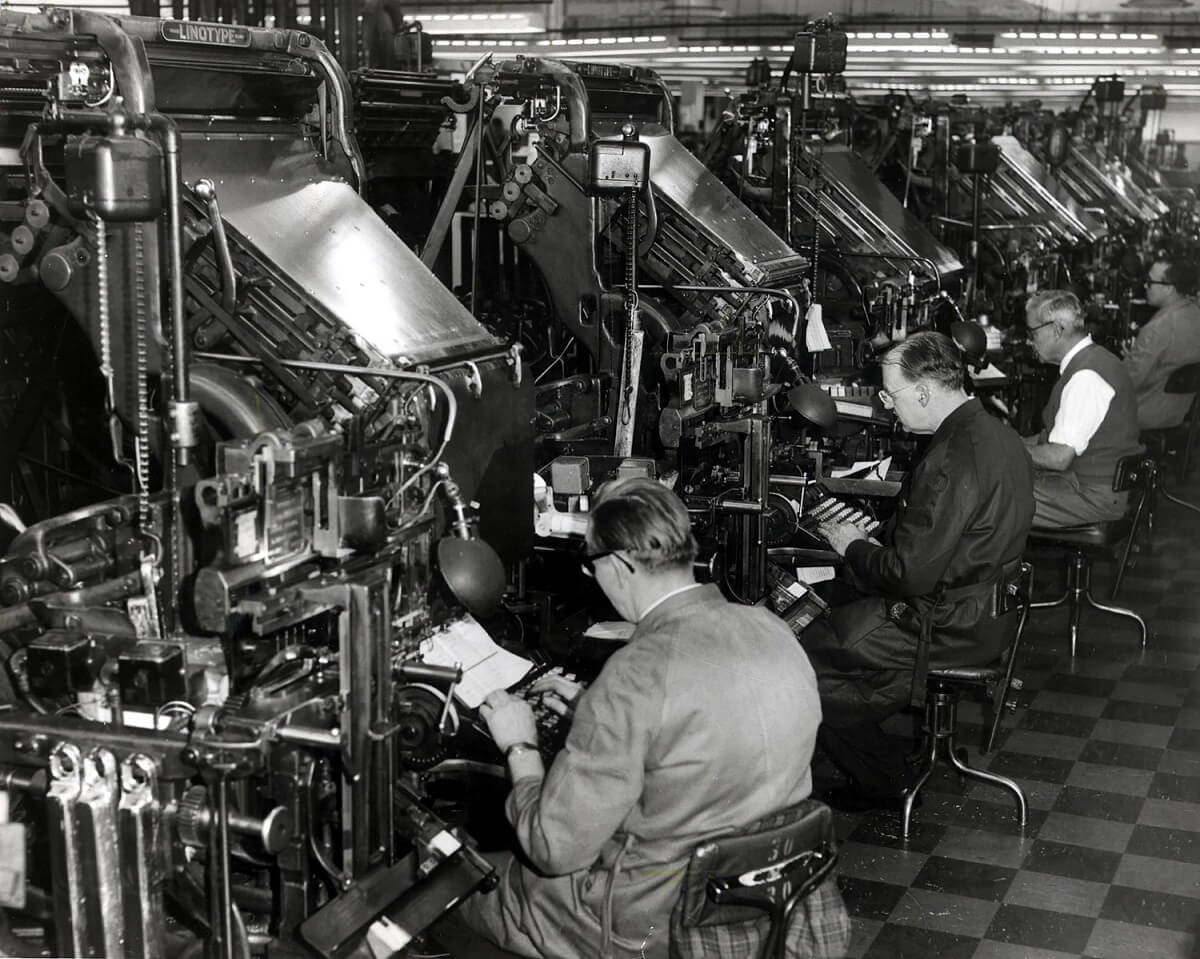By the 1890s Linotype machines, like giant typewriters, appeared in major newspaper offices. The Linotype could literally set a ‘line o’ type’, a significant improvement over manual typesetting. The Linotype was a godsend to Australian newspaper proprietors, allowing them to cut costs in the 1890s depression. One Linotype replaced five or six hand-compositors. Employment at The Age was cut immediately from 120 to 44. At the Argus, staff was reduced to 20.
Linotype operators at The Herald and Weekly Times, Melbourne, by unknown photographer, 1964
Reproduced courtesy Herald Sun
In 1895 Linotype machines were installed at the Herald newspaper, rapidly followed by the other Melbourne daily papers. Linotype operators could assemble 16,000 letters per hour: as a result, both The Age and The Argus discharged over two-thirds of their composing staff.
Linotype operators were the ‘princes and potentates of the printing world’, earning excellent money. In 1926, linotype operators on the Melbourne Herald averaged £12 to £14 per week. The male basic wage was £4 4s.
The profession remained closed to women. According to historian, Raelene Frances, compositors’ unions retained tight control over the new technology, demanding that Linotype machinery be available only to (male) printers, already indentured as compositors in printing craft unions. Women were, in fact, excluded from much of the print industry, bolstered by claims that the work was too heavy, dirty, dangerous, complex and ‘skilled’ for women. For some time women were also prohibited from working night shifts. This kept them out of the newspaper offices, the majority of Australia’s printing factories.

